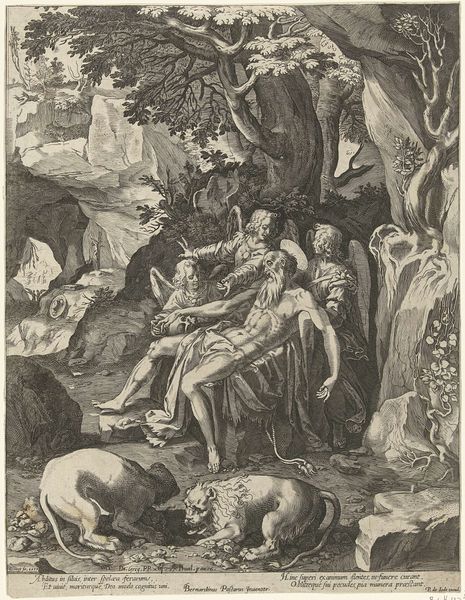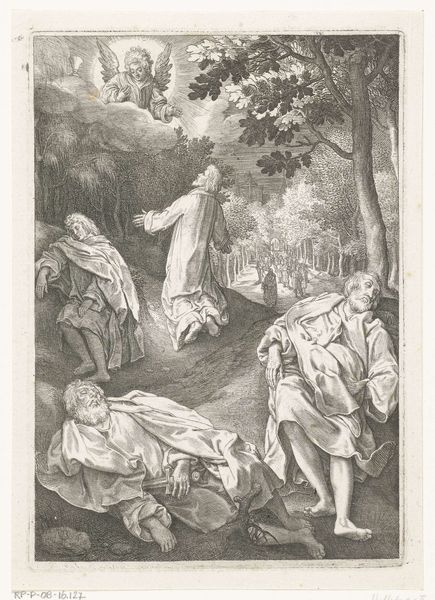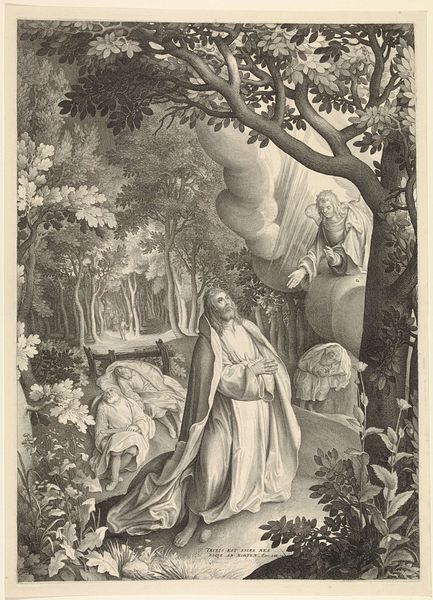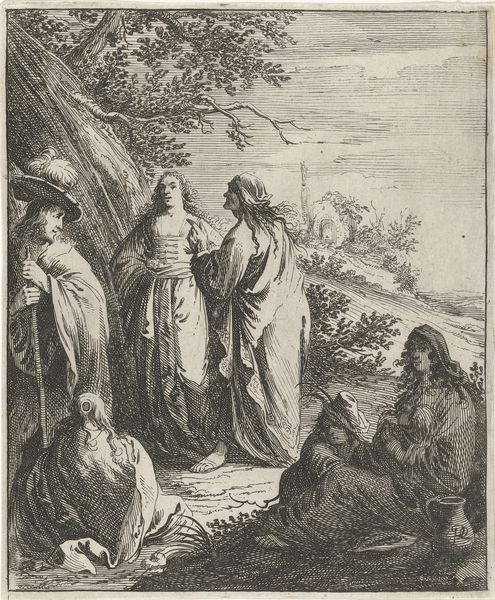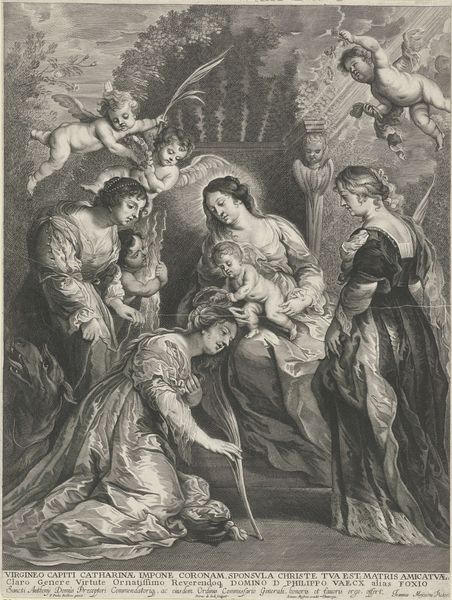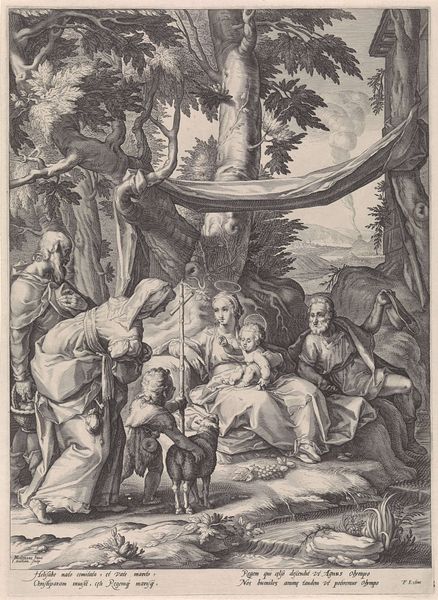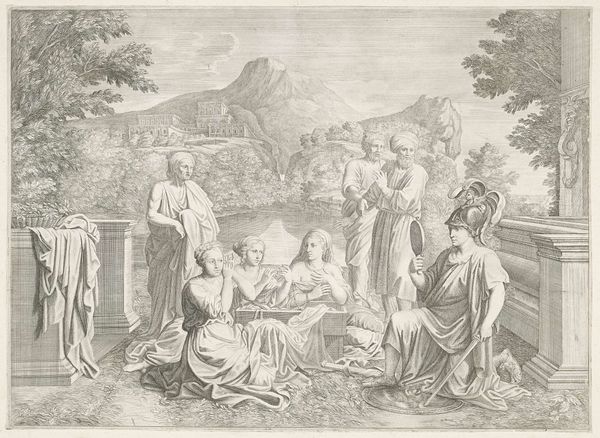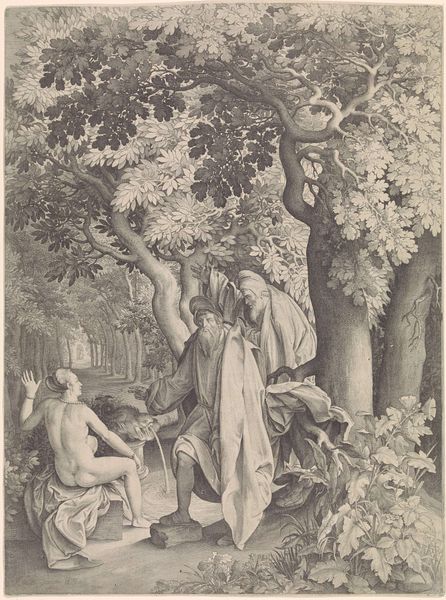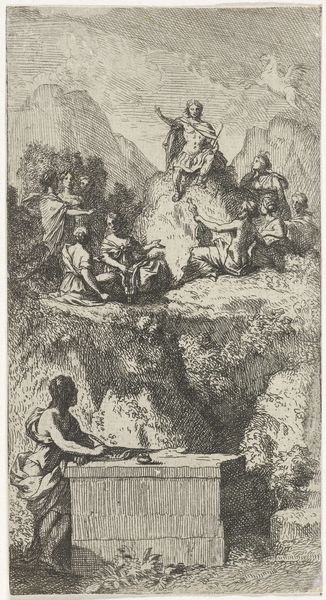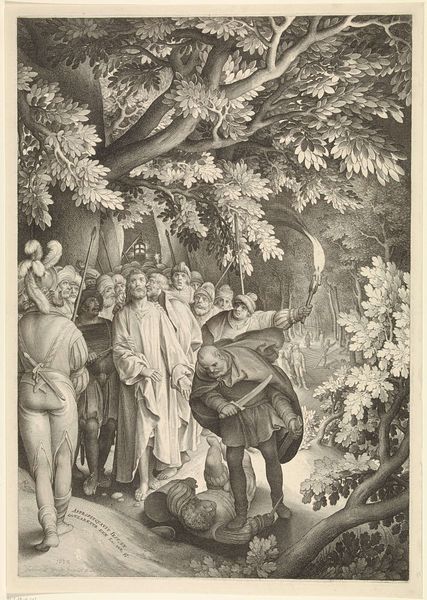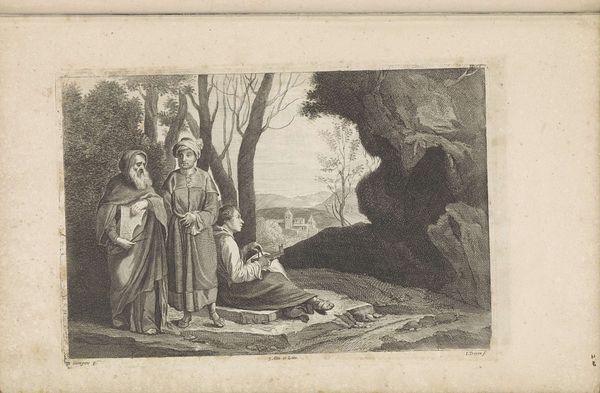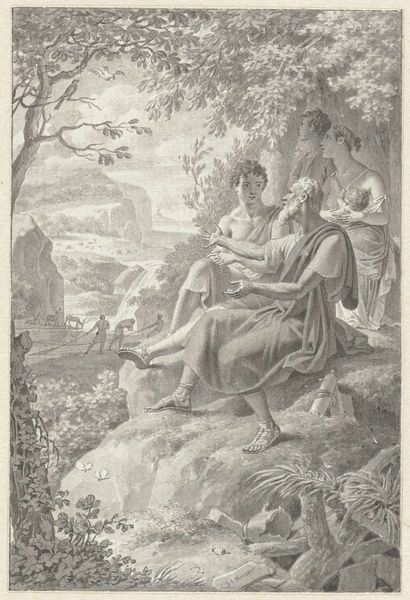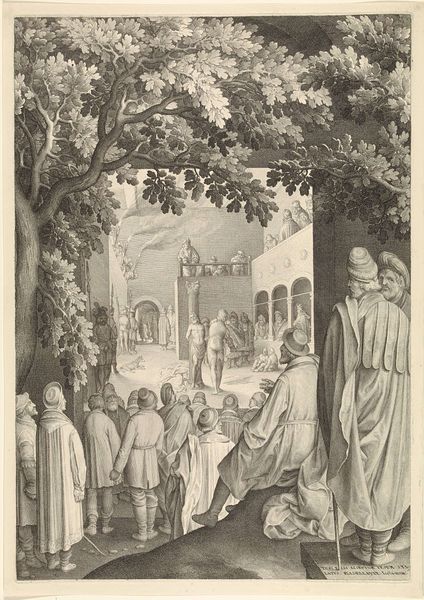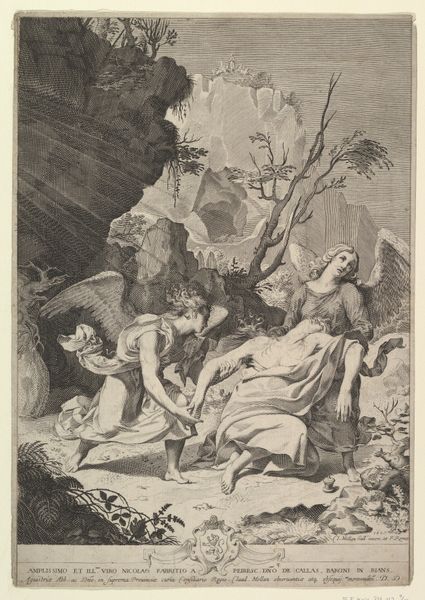
print, engraving
#
baroque
# print
#
landscape
#
figuration
#
line
#
history-painting
#
engraving
Dimensions: width 466 mm, height 644 mm
Copyright: Rijks Museum: Open Domain
Curator: Nicolaes de Bruyn created this engraving, titled "The Entombment," in 1635. The print is currently held in the Rijksmuseum. Editor: My initial response is to the composition, which is unusually stage-like, almost theatrical, for such a somber scene. The landscape setting feels like a backdrop. Curator: Indeed. Note how de Bruyn employs line and shadow to create distinct planes. The foreground, dominated by the body of Christ and mourning figures, is starkly contrasted against the lighter, more ethereal background. It guides our gaze to the cave entrance, where we find a lone, standing female figure in contemplation. Editor: That standing female figure… her stance and veiled head immediately conjure up the Mater Dolorosa, an archetypal image of sorrow. The other mourners display equally powerful symbols of grief; faces turned away, hands clasped, embodying overwhelming loss. Their gestures have a deeply rooted visual language we understand instinctively. Curator: Absolutely. Further, the print's meticulous detail creates a powerful dynamic between stasis and implied movement. Observe how the solidity of the tomb clashes with the organic fluidity of the surrounding trees. Or note the intentional placement of the guiding man, which offers a pathway both into the scene and symbolically beyond earthly constraints. Editor: I am curious about the selection of motifs as it pertains to the tradition of the entombment. The prominence given to the landscape evokes both pastoral peace and an unyielding wilderness. And I notice the symbolic placement of those at prayer near a burial cave–a powerful reminder of the liminal space between life and death across many cultures. Curator: This carefully constructed tension permeates the whole piece. The rigid, almost geometric rendering of the tomb stands in contrast to the looser handling of drapery and foliage, resulting in a push and pull for our eye. The entire picture vibrates with a unique vitality, an elegant blend of serenity and sorrow. Editor: Ultimately, de Bruyn presents us not just with a historical moment, but also with a timeless reflection on mortality, loss, and, perhaps, the seeds of renewal encoded within such scenes of grief. Curator: An insightful perspective indeed. Focusing on these fundamental aesthetic and historical tensions certainly opens up avenues for contemplation about the piece’s underlying meanings and structure.
Comments
No comments
Be the first to comment and join the conversation on the ultimate creative platform.
